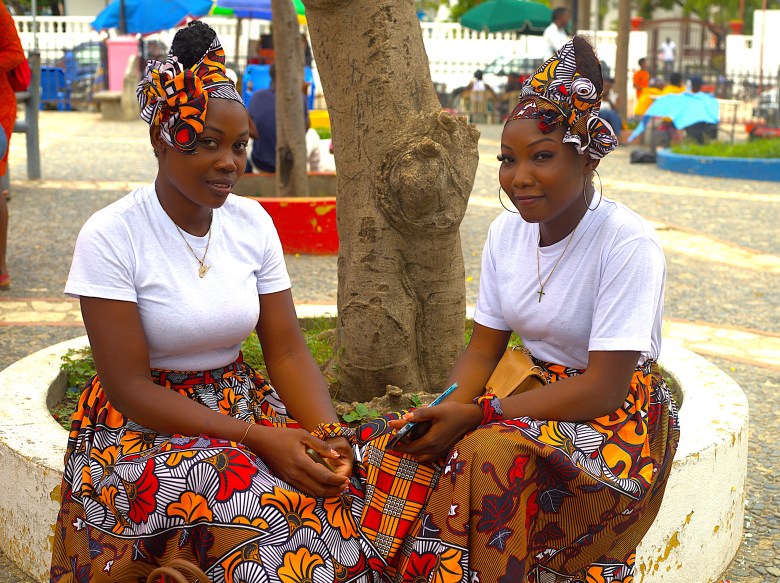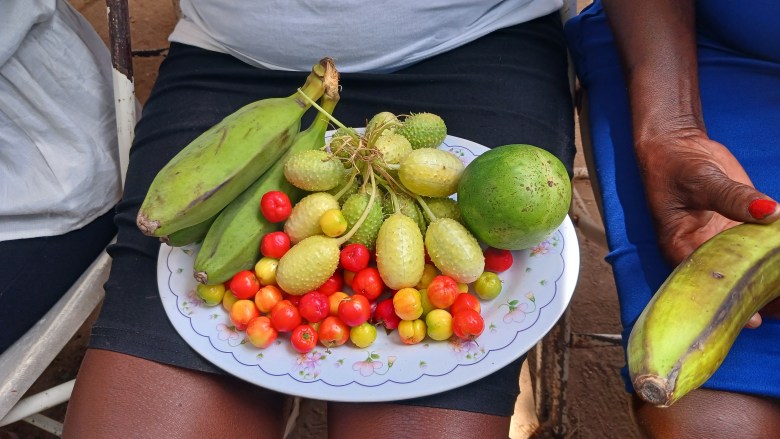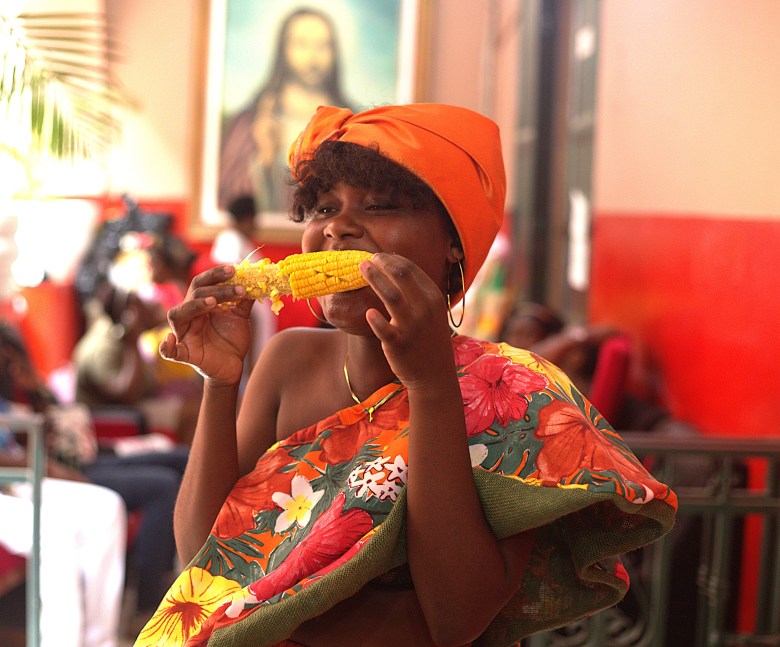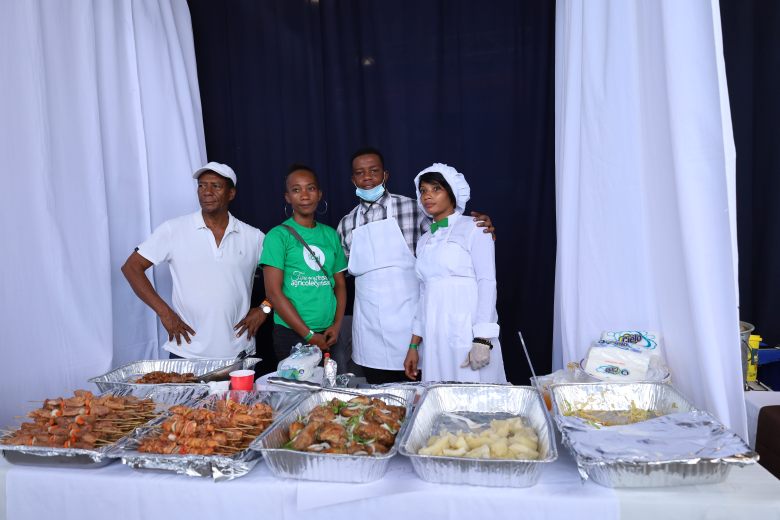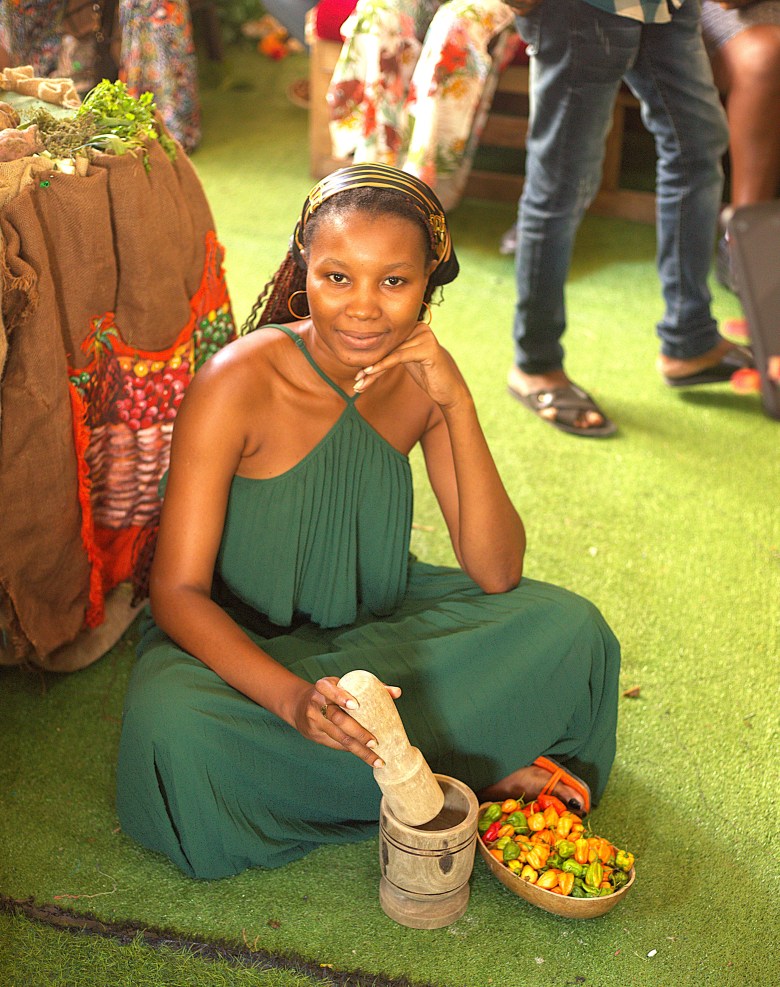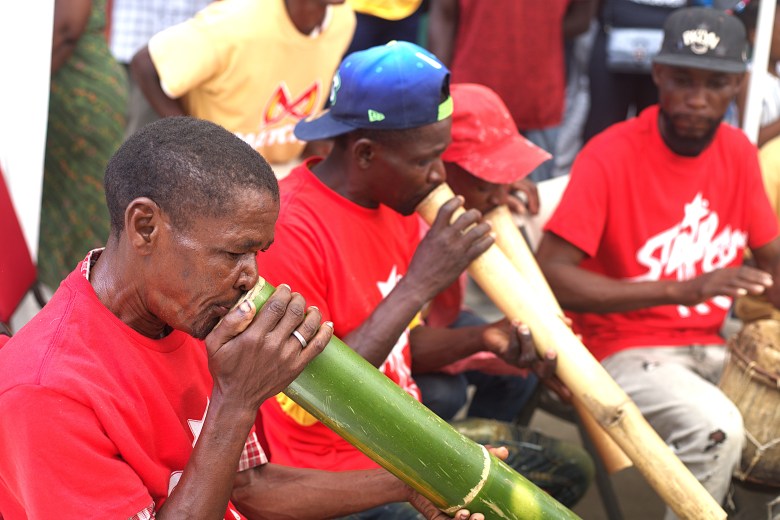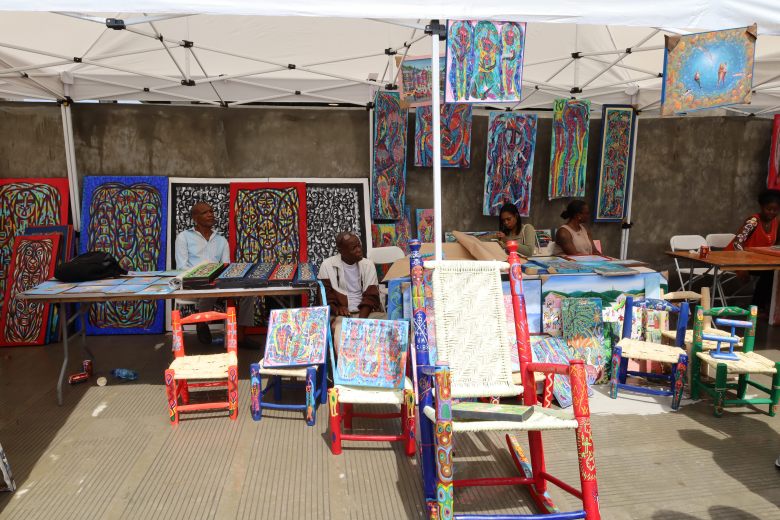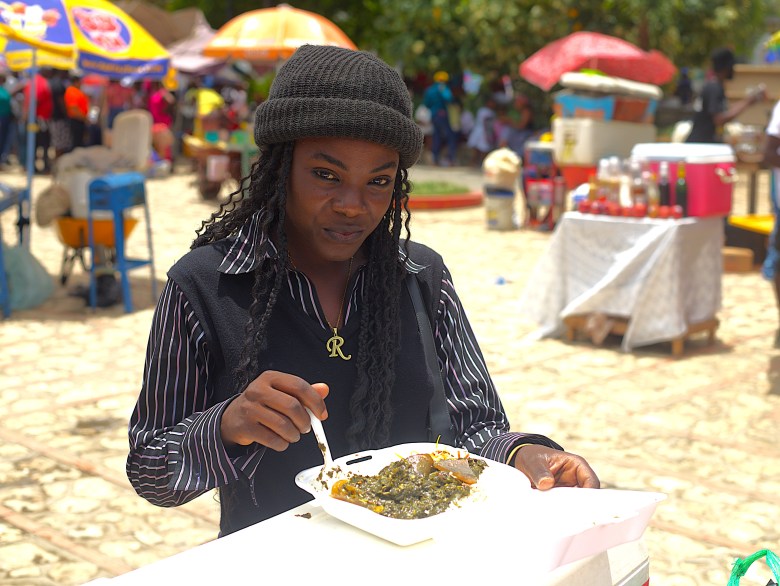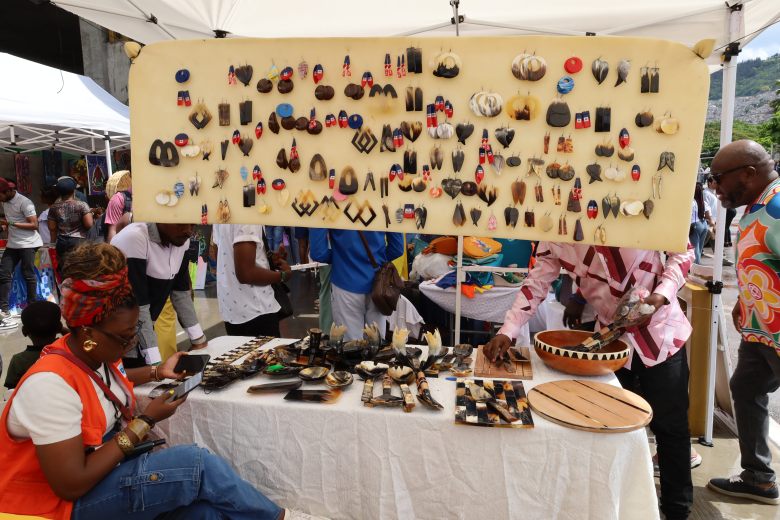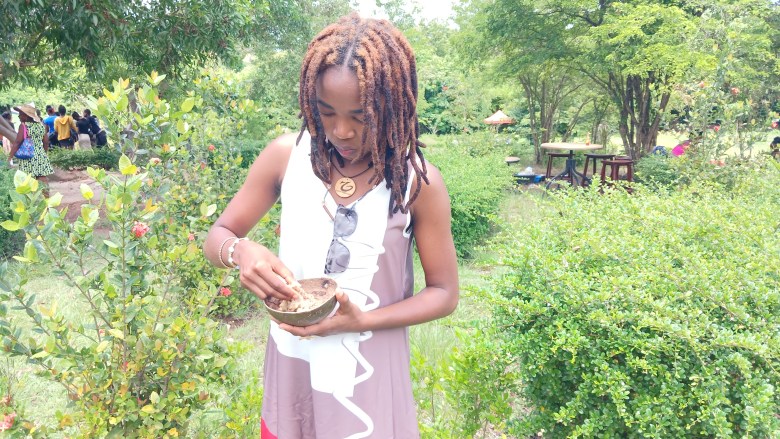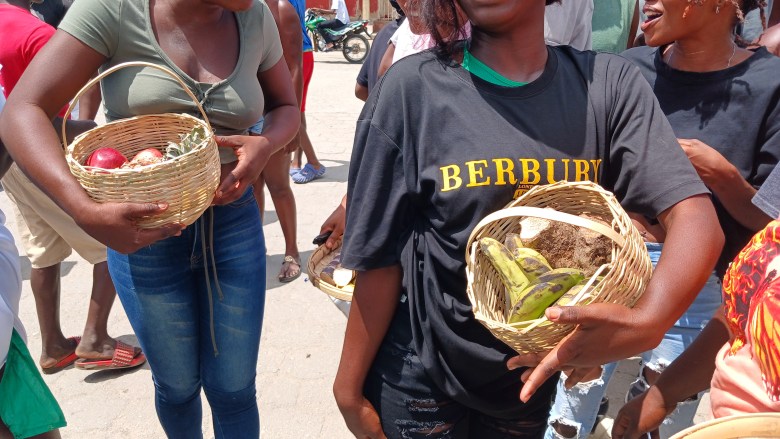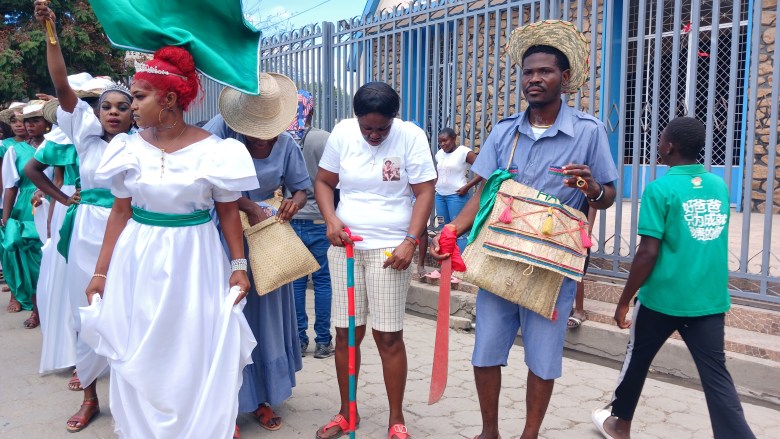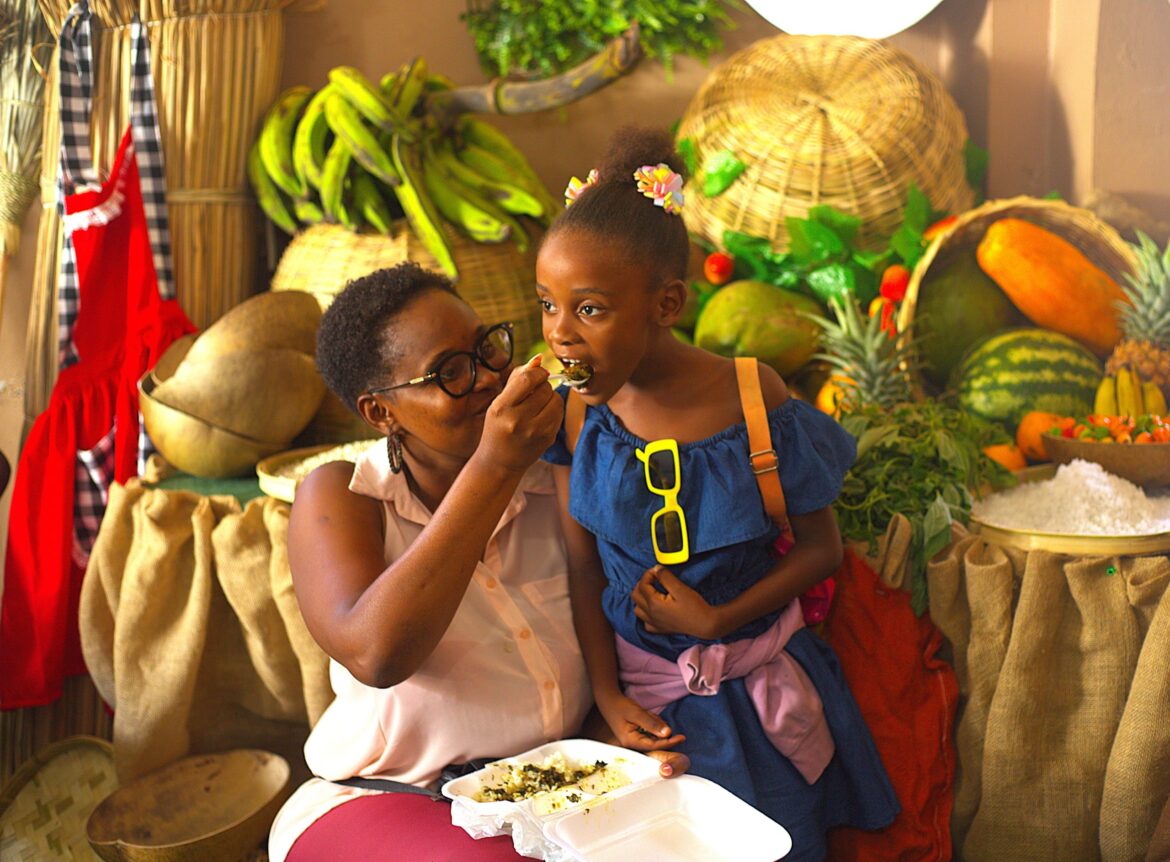Overview:
Haitians celebrated Agriculture and Labor Day with vibrant meals festivals, music, and parades throughout Cap-Haïtien, Port-au-Prince and Ouanaminthe, highlighting cultural pleasure and generational trade.
CAP-HAÏTIEN — On Might 1, Haitians throughout the nation marked Agriculture and Labor Day with meals festivals, parades and group gatherings that honored native traditions and highlighted the position of farming in on a regular basis life. Recognized regionally as Fèt Travay ak Agrikilti, the vacation additionally handed cultural practices to youthful generations.
At one celebration at Institut Sacré-Cœur du Cap-Haïtien, a girl stirred a to-go field of diri ak lalo—white rice blended with jute leaves, a conventional Creole dish. Because the rice turned inexperienced, she took a chunk, then provided a spoonful to a lady on her lap. After a second’s hesitation, the woman opened her mouth and tasted the dish—one other instance of custom handed by way of meals.
Close by, a person helped a child sip coconut water by way of a straw, displaying how early meals connects Haitians to their tradition.
Throughout the nation, residents hosted occasions showcasing the bounty of native agriculture and the richness of Haitian delicacies. Meals festivals featured staples like tchaka, a hearty stew of corn, beans and pork, and bouyon, a savory soup with plantains, yams and meat.
Two of the most important gatherings happened on the Agricultural and Artisanal Resistance Truthful on the El Rancho Conference Heart in Pétion-Ville and the celebration in Cap-Haïtien.
“The little woman rapidly gave in and opened her mouth. Judging by the look on her face, the standard diri ak lalo isn’t too dangerous.”
In Port-au-Prince, cultural group Gwoup Eritaj organized the honest, incomes an honorary plaque from the Ministry of the Inside and Native Authorities for selling Haitian heritage and native manufacturing.
The occasions additionally spotlighted Haitian music and craftsmanship. Drums, horns and percussion stuffed the air as artisans displayed handmade items—suitcases, sandals and pottery amongst them. Youngsters painted alongside adults, reinforcing shared cultural identification.
In Ouanaminthe, within the northeast, the Group for the Improvement of Emancipated Ladies of Haiti led a spirited march. Individuals carried baskets of native vegetables and fruit—plantains, apples, yams—turning the streets right into a transferring celebration of Haitian abundance.
Relive a number of the most savory moments of Agriculture Day in Haiti in these pictures and movies.
